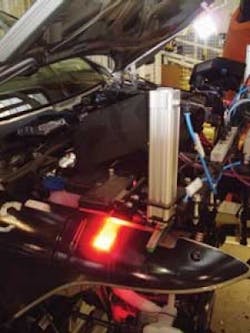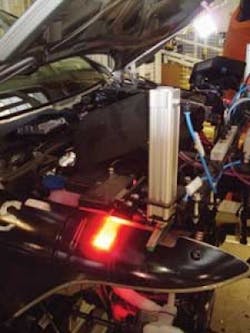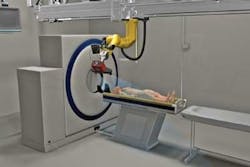PHOTOVOLTAICS: Machine vision speeds edge isolation in solar cells
Machine-vision technology is now being used in many stages of photovoltaic production to supervise and control manufacturing processes. “In edge isolation systems, wafer classification, and solar module inspection, machine vision is being used to both check the quality of individual process steps and provide feedback to better understand and control manufacturing processes themselves,” says Johannes Stelter, head of the Intralogistics and Image Processing Division at Eckelmann (Wiesbaden, Germany; www.eckelmann.de), a developer of control systems for industrial automation.
Integrated machine-vision systems are required for the positioning and measurement of geometric properties such as edge and chamfer lengths of solar wafers. These systems must also identify material faults such as microcracks or chips and guide laser-based systems to provide laser edge isolation.
“Edge isolation provides electrical separation between the active front side of a solar cell and the rear side,” says Stelter. “In the edge isolation process, a laser cuts a small groove along the cell edges, the depth of the groove depending on the width of the doped emitter layer of the cell. The difficulty lies in positioning the groove as close as possible to the outer contour of the cell to maximize the active surface and thus the efficiency of the solar cell.”
To develop a laser edge isolation system for the Asys Group (Dornstadt, Germany; www.asys.de), a manufacturer of handling systems and process machines for the electronic and solar industries, Eckelmann teamed with Stemmer Imaging (Puchheim, Germany; www.stemmer-imaging.de) to produce a system based on linescan cameras that can measure the outer contours and transfer contour data to the control system of a deflection mirror-based laser etching system (see figure). Edge damage is detected and, if the damage is within tolerance levels, the system proceeds with the cutting process.
To perform this task, images of each 125- or 156-mm square wafer is illuminated with custom LED lighting and digitized with a 4k Piranha Color, 17-kHz linescan camera from DALSA (Waterloo, ON, Canada; www.dalsa.com) fitted with a Distagon 28-mm lens from Carl Zeiss (Oberkochen, Germany; www.zeiss.de). Placed 300 mm above the solar cell to be inspected, the cameras is moved at 680 mm/s on a gantry, which results in a field of view of approximately 165 × 165 mm, producing images each of 4096 × 4096 pixels.
As the solar panel is moved across the camera’s field of view, images are digitized into a PC using an X64 Xcelera-CL, also from DALSA, and edge detection image analysis is performed. As the laser engraves the edge isolation grid into the solar cell, grid distances are measured by the camera and any differences in this value and the expected value are used to compensate for nonlinear errors that may occur.
“Image acquisition and analysis take place in 800 ms,” says Stelter. The resolution of the system makes it possible to ensure that laser edge isolation can be performed less than 100 µm from the edge of the wafer.
Because the laser and camera system are automatically calibrated by the machine-vision system, recalibration can be automatically performed after any maintenance work. The system calculates a compensation map that is used for error correction in the control system of the laser deflection unit. Errors in the transport system of the machine can be also be diagnosed using the image-processing system, thus allowing for remedial action to be taken.


